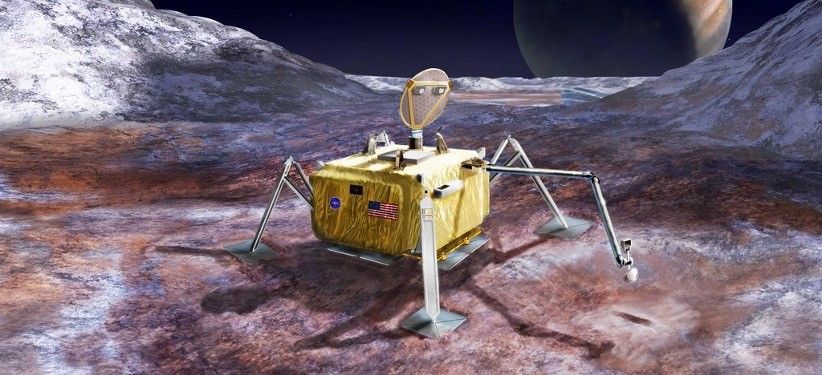Studies by the National Academies of Science Engineering and Medicine
The National Academies continues to provide a national perspective on research needs for each of the Strategic Thrusts in NASA Aeronautics’ strategic plan. Completed studies are available here:
“Advanced Aerial Mobility: A National Blueprint (2020)”
Advanced aerial mobility is a newly emerging industry that aims to develop and operate new air vehicles potentially capable of safe, reliable, and low-noise vertical flight. The world has seen a recent increase in the adoption of electric vertical lift aircraft for urban, suburban and rural operations. These new innovations and technologies change the way that we move cargo and people, affecting industries across the economy. These changes will challenge today’s airspace monitoring systems and regulatory environment. The U.S. government and its regulatory agencies need technical guidance to facilitate the development of these technologies, and to create the regulatory framework to foster the growth of this vertical flight industry to the benefit of the aviation industry.
Advancing Aerial Mobility evaluates the potential benefits and challenges associated with this emerging industry. This report provides recommendations that seek to foster an environment in which the nation can maintain its leading position in developing, deploying, and embracing these new technologies. This publication presents a national vision for advanced aerial mobility, market evolution, and safety and security management.
“In-Time Aviation Safety Management: Challenges and Research for an Evolving Aviation System (2018)”
Decades of continuous efforts to address known hazards in the national airspace system (NAS) and to respond to issues illuminated by analysis of incidents and accidents have made commercial airlines the safest mode of transportation. The task of maintaining a high level of safety for commercial airlines is complicated by the dynamic nature of the NAS. The number of flights by commercial transports is increasing; air traffic control systems and procedures are being modernized to increase the capacity and efficiency of the NAS; increasingly autonomous systems are being developed for aircraft and ground systems, and small aircraft—most notably unmanned aircraft systems—are becoming much more prevalent. As the NAS evolves to accommodate these changes, aviation safety programs will also need to evolve to ensure that changes to the NAS do not inadvertently introduce new risks.
Real-time system-wide safety assurance (RSSA) is one of six focus areas for the National Aeronautics and Space Administration (NASA) aeronautics program. NASA envisions that an RSSA system would provide a continuum of information, analysis, and assessment that supports awareness and action to mitigate risks to safety. Maintaining the safety of the NAS as it evolves will require a wide range of safety systems and practices, some of which are already in place and many of which need to be developed. This report identifies challenges to establishing an RSSA system and the high-priority research that should be implemented by NASA and other interested parties in government, industry, and academia to expedite development of such a system.
The primary human activities that release carbon dioxide (CO2) into the atmosphere are the combustion of fossil fuels (coal, natural gas, and oil) to generate electricity, the provision of energy for transportation, and as a consequence of some industrial processes. Although aviation CO2 emissions only make up approximately 2.0 to 2.5 percent of total global annual CO2 emissions, research to reduce CO2 emissions is urgent because (1) such reductions may be legislated even as commercial air travel grows, (2) because it takes new technology a long time to propagate into and through the aviation fleet, and (3) because of the ongoing impact of global CO2 emissions.
Commercial Aircraft Propulsion and Energy Systems Research develops a national research agenda for reducing CO2 emissions from commercial aviation. This report focuses on propulsion and energy technologies for reducing carbon emissions from large, commercial aircraft— single-aisle and twin-aisle aircraft that carry 100 or more passengers—because such aircraft account for more than 90 percent of global emissions from commercial aircraft. Moreover, while smaller aircraft also emit CO2, they make only a minor contribution to global emissions, and many technologies that reduce CO2 emissions for large aircraft also apply to smaller aircraft.
As commercial aviation continues to grow in terms of revenue-passenger miles and cargo ton miles, CO2 emissions are expected to increase. To reduce the contribution of aviation to climate change, it is essential to improve the effectiveness of ongoing efforts to reduce emissions and initiate research into new approaches.
“Autonomy Research for Civil Aviation: Toward a New Era of Flight (2014)”
The development and application of increasingly autonomous (IA) systems for civil aviation is proceeding at an accelerating pace, driven by the expectation that such systems will return significant benefits in terms of safety, reliability, efficiency, affordability, and/or previously unattainable mission capabilities. IA systems range from current automatic systems such as autopilots and remotely piloted unmanned aircraft to more highly sophisticated systems that are needed to enable a fully autonomous aircraft that does not require a pilot or human air traffic controllers. These systems, characterized by their ability to perform more complex mission-related tasks with substantially less human intervention for more extended periods of time, sometimes at remote distances, are being envisioned for aircraft and for air traffic management and other ground-based elements of the national airspace system. Civil aviation is on the threshold of potentially revolutionary improvements in aviation capabilities and operations associated with IA systems. These systems, however, face substantial barriers to integration into the national airspace system without degrading its safety or efficiency.
Autonomy Research for Civil Aviation identifies key barriers and suggests major elements of a national research agenda to address those barriers and help realize the benefits that IA systems can make to crewed aircraft, unmanned aircraft systems, and ground-based elements of the national airspace system. This report develops a set of integrated and comprehensive technical goals and objectives of importance to the civil aeronautics community and the nation. Autonomy Research for Civil Aviation will be of interest to U.S. research organizations, industry, and academia who have a role in meeting these goals.



































